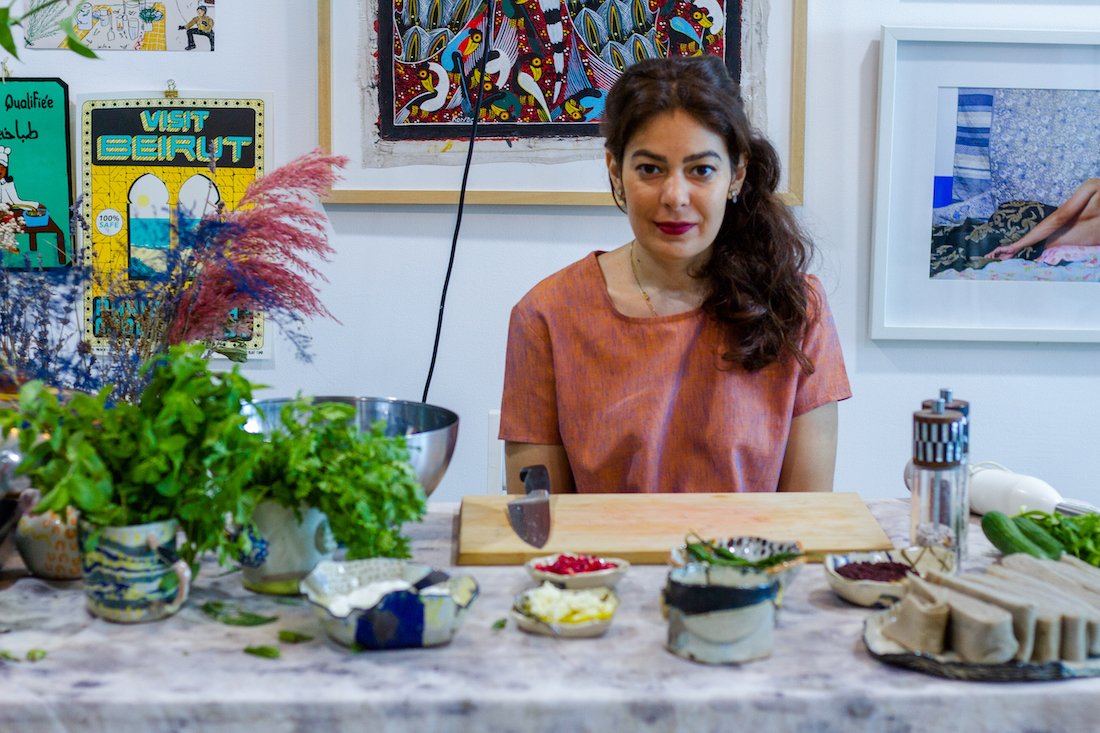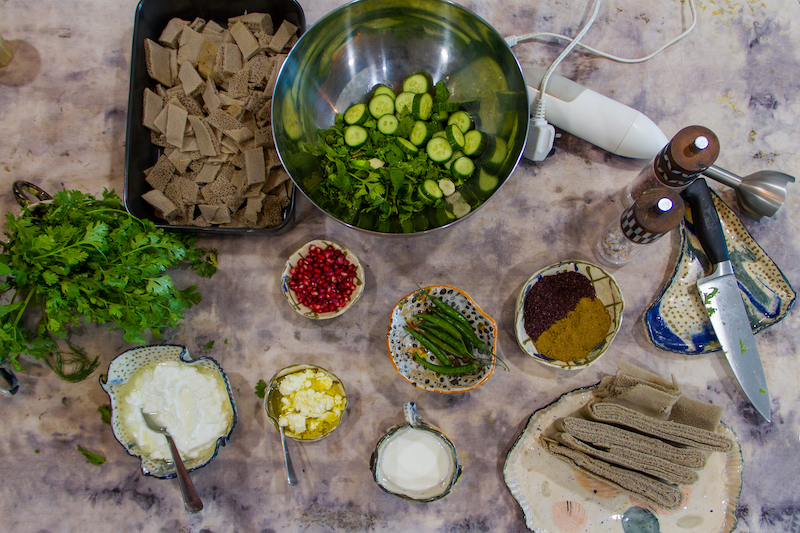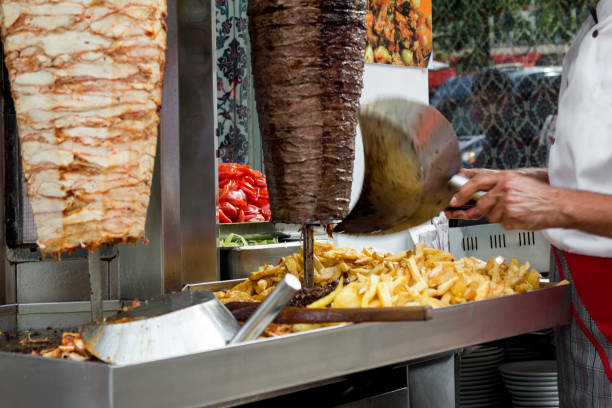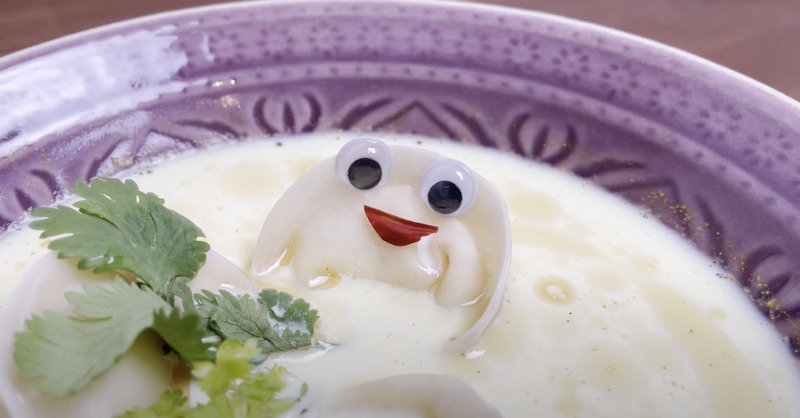Shafoot is a cooling, hydrating Yemeni dish typically served during Ramadan. Some refer to it as a salad, appetizer, or palette cleanser.
Overlaps can be found between Fatteh, a yoghurt and bread staple in the Middle East, and Dahi Vada, a yoghurt and dumpling staple in South Asia.
I tasted this dish with my dear friends and artists Sarah Ahmed and Sarah El Mehairi sitting in a park in Abu Dhabi under the dusk of Iftar time. Sarah brought these Yemeni dishes up for us from a tiny takeaway restaurant called Homemade that specializes in Yemeni snacks, hailing specifically from Aden, which differs from the more popular array of Yemeni menus that showcase rice and meat as the stars of the show. The stars in this restaurant were mainly vegetarian, easy to eat, and the kinds of foods you would whip together as a midnight snack.
As we sat for hours in this park surrounded by hungry, envious cats, and our conversations (as they tend to do) began to unpack the multiple layers of our ethnicities, the complexities around being from Yemen and the diaspora, and the incredible influences and flavors that make up our foods.
As I also started to consult more of my Yemeni friends, namely Shaima Al Tamimi, a plethora of videos and recipes from the underbelly of the internet came to my attention. For most, the default bread to use would be a sour like pancake called Luhooh, native to Yemen, except that for those recreating this recipe and living across the globe, one had to make do with french baguette, pita bread, toast bread, and injera bread. What I also came to appreciate is that each household and region has a kind of autonomy over the toppings—ranging from fruits to other herbs—and how it is served: is it a starter, palette cleanser, or salad? You tell us.
While recreating this dish, I was acutely aware of my position of privilege, geography, and inability to access all of the accurate ingredients. The act of showcasing this dish is my plea for you to turn your attention to cuisines that are lesser known and consider why that is. When you are next sitting with your friends from Yemen, those who have had to acclimatize to your worlds, ask them to share what is theirs.
INGREDIENTS
Yogurt
Labneh—this is optional, but come on, I already taught you how to make some!
Ayran or diluted yoghurt
Coriander
Chillies
Mint
Garlic—this is optional and use it very sparingly!
Cumin
Sumac
Your choice of toppings—I chose to garnish with pomegranates
Bread—traditionally a Yemeni bread called Luhooh is used that resembles Ethiopian Injera but use a bread that you can easily tear or cut into many pieces
A deep dish to layer
A blender
INSTRUCTIONS
A special thank you to Sarah Ahmed and Shaima Al Tamimi
Photography and videography by Nava Rizvi
Music: “Ana Mashi” by Kabreet
Font by Augustine Paredes
Table styling by Nava Rizvi and Nahla Tabbaa
Ceramics by Nahla Tabbaa
Table cloth by The Alchemy of Dyeing
Commissioned by East East








